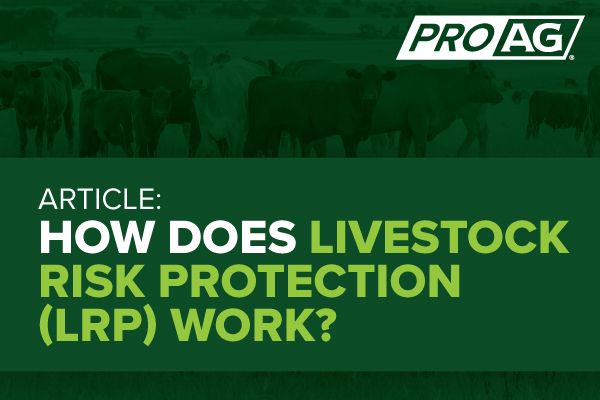The 2-Minute Rule for Bagley Risk Management
The 2-Minute Rule for Bagley Risk Management
Blog Article
Expert Assistance on Risk Evaluation and LRP Insurance Coverage Solutions

The Significance of Danger Analysis
Effective threat evaluation is fundamental in the decision-making process of any company, leading critical preparation and resource allowance. By methodically determining, assessing, and prioritizing potential threats, businesses can prepare for obstacles, profit from possibilities, and make educated options to attain their purposes. Threat assessment allows organizations to proactively address susceptabilities, alleviate dangers, and enhance their danger administration techniques.
One of the essential benefits of threat evaluation is its function in improving functional performance. By recognizing the prospective dangers that can affect different facets of the organization, companies can streamline procedures, designate sources extra successfully, and reduce the probability of costly disruptions. Danger analysis enables business to conform with governing demands, guard their credibility, and construct trust with stakeholders.
Recognizing Prospective Losses
To realize the impact of danger evaluation, it is vital to understand the possible losses that can significantly affect an organization's operations and monetary security. Possible losses can emerge from numerous resources, consisting of all-natural disasters, economic downturns, functional failures, regulatory changes, and cybersecurity breaches. These losses can lead to direct expenses such as residential or commercial property damage, lawful costs, and fines, along with indirect costs like reputational damages and loss of market share.
Understanding potential losses involves performing a complete evaluation of the dangers that might emerge and approximating the monetary impact they may carry the company. By evaluating these prospective losses, services can prioritize risk reduction initiatives and designate resources efficiently. Furthermore, an extensive understanding of potential losses makes it possible for companies to make educated decisions when selecting danger administration methods, such as purchasing insurance policy protection or executing risk control actions. Bagley Risk Management.
Essentially, by identifying and understanding possible losses, companies can proactively handle threats and safeguard their lasting sustainability and success.
Role of LRP Insurance Policy Solutions
The combination of LRP insurance solutions within an organization's threat monitoring structure improves durability and strengthens monetary security versus unexpected misfortunes. LRP, or Loss Healing Item, insurance coverage solutions play a critical duty in minimizing the effect of prospective losses by providing economic security and assistance in times of dilemma. These insurance coverage remedies are tailored to meet the specific needs of services, offering coverage for different risks such as residential property damage, service disruption, liability cases, and extra.
By transferring the monetary threat to an insurance coverage provider, organizations can focus on their core operations with greater peace of mind, recognizing that they are safeguarded versus significant financial losses. Furthermore, LRP insurance solutions can enhance an organization's risk management strategy by supplementing existing threat mitigation procedures and guaranteeing extensive security across all areas of prospective susceptability.
Identifying Trick Threats
In the procedure of risk assessment, an essential step includes identifying vital dangers that have the prospective to impact an organization's procedures and financial stability. Recognizing essential dangers requires a detailed assessment of internal and external factors that could present risks to the organization's objectives. Interior risks might include functional ineffectiveness, compliance issues, or human source difficulties, while outside threats might encompass economic downturns, governing adjustments, or natural catastrophes.

Moreover, key dangers must be consistently assessed look at this site and upgraded to align with the dynamic company environment. This positive approach enables companies to remain in advance of possible threats and protect their lasting success.
Choosing the Right Protection
Having actually identified the key threats that could influence a company's procedures and financial security, the next important step entails thoroughly choosing the best protection to properly manage and alleviate these threats. When it pertains to selecting the right insurance coverage, organizations need to consider their specific risk exposure, economic capacities, and critical purposes. It is important to perform a thorough evaluation of the offered insurance coverage alternatives to make certain that the picked protection straightens with the company's risk management objectives.

Organizations ought to work carefully with skilled insurance coverage specialists to examine their danger accounts and identify one of the most ideal insurance coverage items to address their demands. Tailoring insurance policy protection to certain threats can assist maximize security while decreasing unneeded prices. Additionally, organizations need to evaluate plan terms in detail to recognize the level of insurance coverage offered and any possible exclusions that may impact their risk mitigation techniques.
Conclusion
To conclude, risk assessment is crucial in determining potential losses and choosing the ideal LRP insurance solutions. By recognizing key dangers, services can alleviate financial impacts and shield their properties. It is vital read what he said to thoroughly assess and assess threats to make certain ideal protection is in place. Specialist assistance can aid navigate the complexities of risk assessment and insurance policy solutions, giving companies with top article the necessary devices to successfully handle and alleviate risks.
Expert guidance plays a critical role in this process, using beneficial insights right into recognizing and examining threats, as well as tactically choosing appropriate insurance protection customized to mitigate those dangers properly. A detailed understanding of potential losses allows companies to make enlightened choices when selecting danger monitoring approaches, such as acquiring insurance policy protection or applying danger control measures.

Report this page